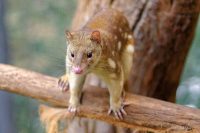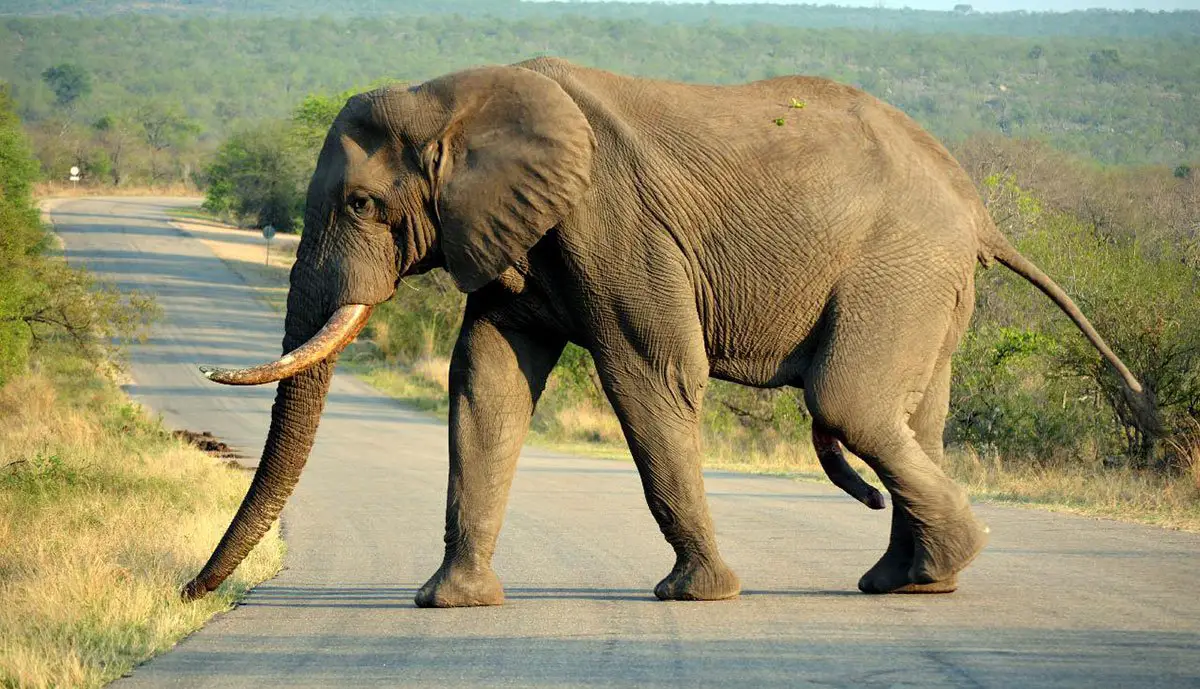Do you want to enjoy some of the most interesting tiger quoll facts? We have researched fun facts and information so you get to know all about tiger quolls. The tiger quoll (Dasyurus maculatus) is a medium-sized mammal and it is typically found in Australia. The tiger quoll is the longest carnivorous marsupial in the world. It is often referred to as spotted quoll, tiger cat, spotted-tail quoll, and spotted-tail dasyure. Let see many more tiger quoll facts for kids.
Spotted Quoll Facts
Size & Weight: The tiger quoll is the biggest of the quoll species. Adult males weigh up to 3.5 kg while females average 1.8 kg. This shows that females are only half the size of males.
Description: It has relatively short but robust legs. The tiger quoll’s tail is as long as its body. It has elongated snout and thick neck. The quoll doesn’t have prehensile tail. Tiger quolls are mainly recognized by their orange-brown fur with white spots on it.
Distribution & Range: Tiger quolls inhabit eastern Australia, eastern New South Wales, Tasmania, southeastern Queensland, and Victoria. Like most other marsupials, tiger quolls are native species of Australia.
Habitat: Tiger quolls are thought to make homes in closed eucalypt forests and rainforests but they generally fancy living in wet forests.
Behavior: They have adapted to living arboreal lifestyle which means that tiger quolls mainly live in trees. However they do move on the ground. Studies suggest that 11% of tiger quoll’s travelling is done on ground.
 Diet: The tiger quoll will eat just about any animal including lizards, arboreal possums, domestic poultry, platypus, small wallabies, rabbits, crayfish, insects, birds, small mammals, and wombats. Like Tasmanian devil, the tiger quoll is a scavenger (but not as strong as devil) in that it actively feeds on carrion of feral pigs, dingoes, cattle, and kangaroos.
Diet: The tiger quoll will eat just about any animal including lizards, arboreal possums, domestic poultry, platypus, small wallabies, rabbits, crayfish, insects, birds, small mammals, and wombats. Like Tasmanian devil, the tiger quoll is a scavenger (but not as strong as devil) in that it actively feeds on carrion of feral pigs, dingoes, cattle, and kangaroos.
Lifestyle: They will hunt live prey into the tree particularly at night. Tiger quolls will spend their entire day in dens. They make dens in rock crevices, tree hollows, underground burrows, under houses, caves, and hollow logs.
Vocalizations: Tiger quolls aren’t really vocal but they do produce a variety of sounds such as hisses, coughs, cp-cp-cp, and huffs. Females often communicate with ch-ch or ech-ech sounds.
Reproduction: The mating season of tiger quoll ranges from June to July but sometime they do mate as early as in April. The female gives birth to a single baby. The mother looks after the joey in its pouch. The young quoll relies on mother in the first 60 – 70 days.
Predators: Predators of tiger quolls are wild dogs, foxes, Tasmanian devils, and ferals.
Conservation Status: The International Union for the Conservation of Nature (IUCN) has listed the species as Near Threatened. Habitat destruction is probably the biggest threat to the tiger quoll population.





